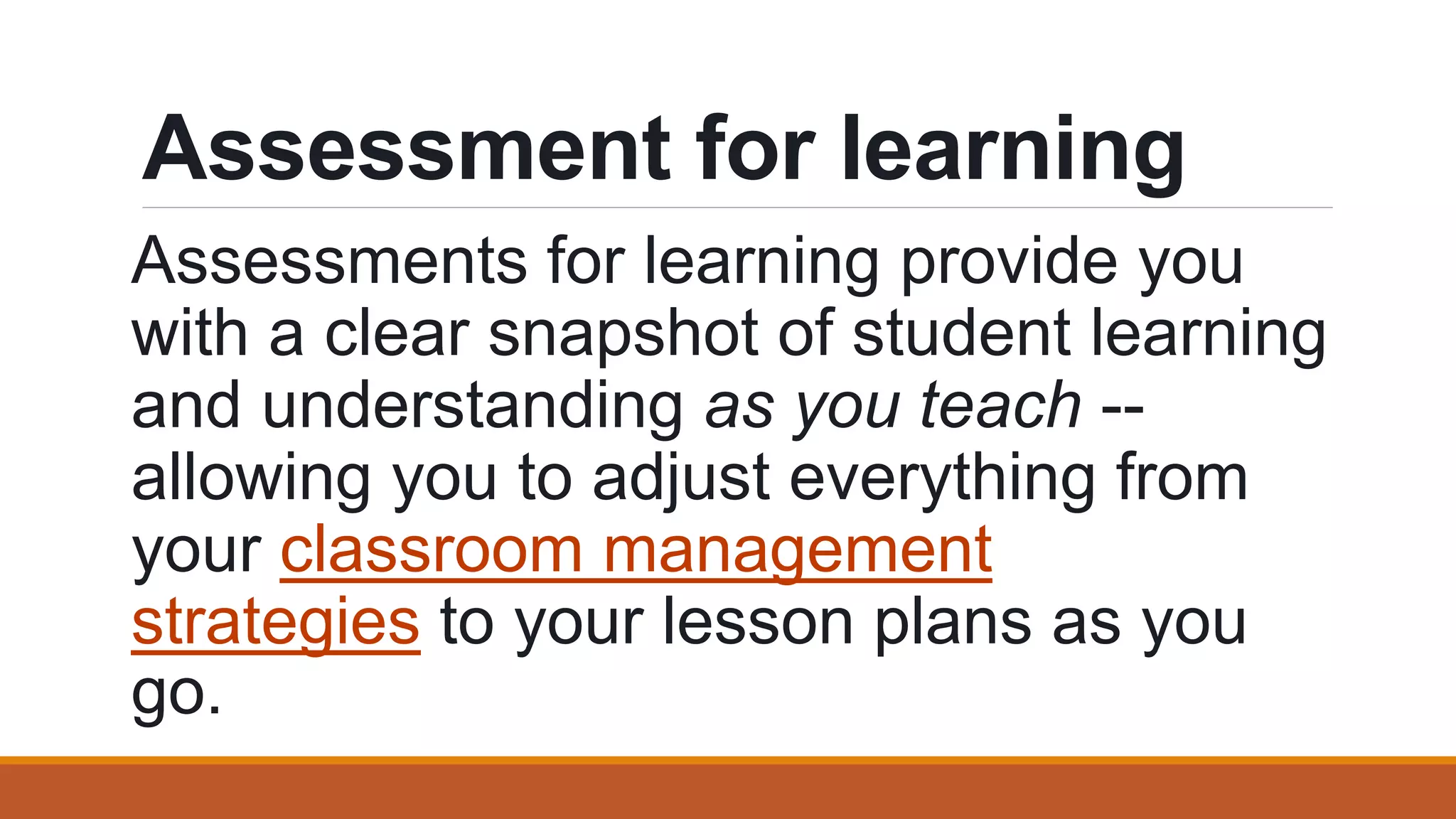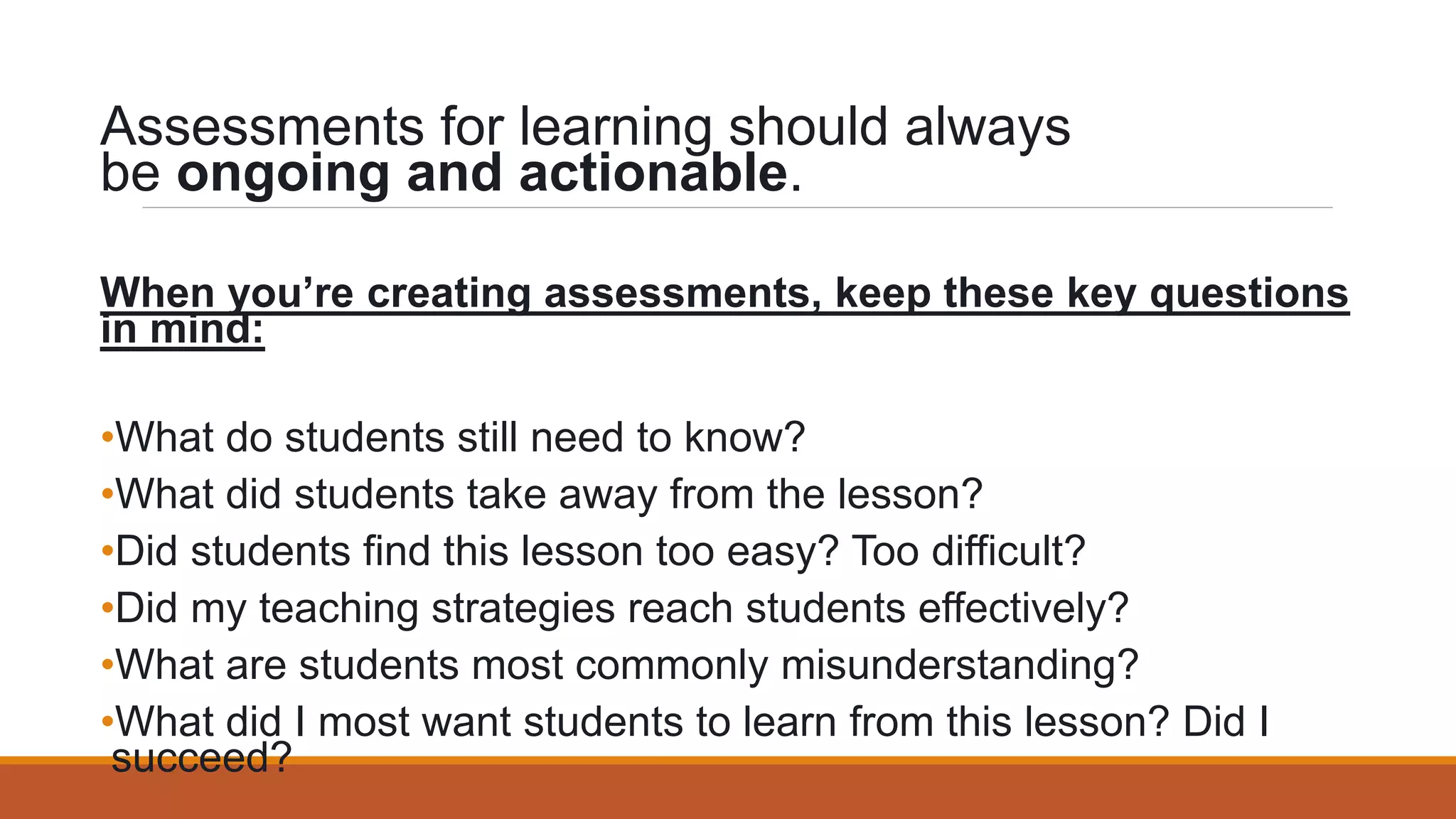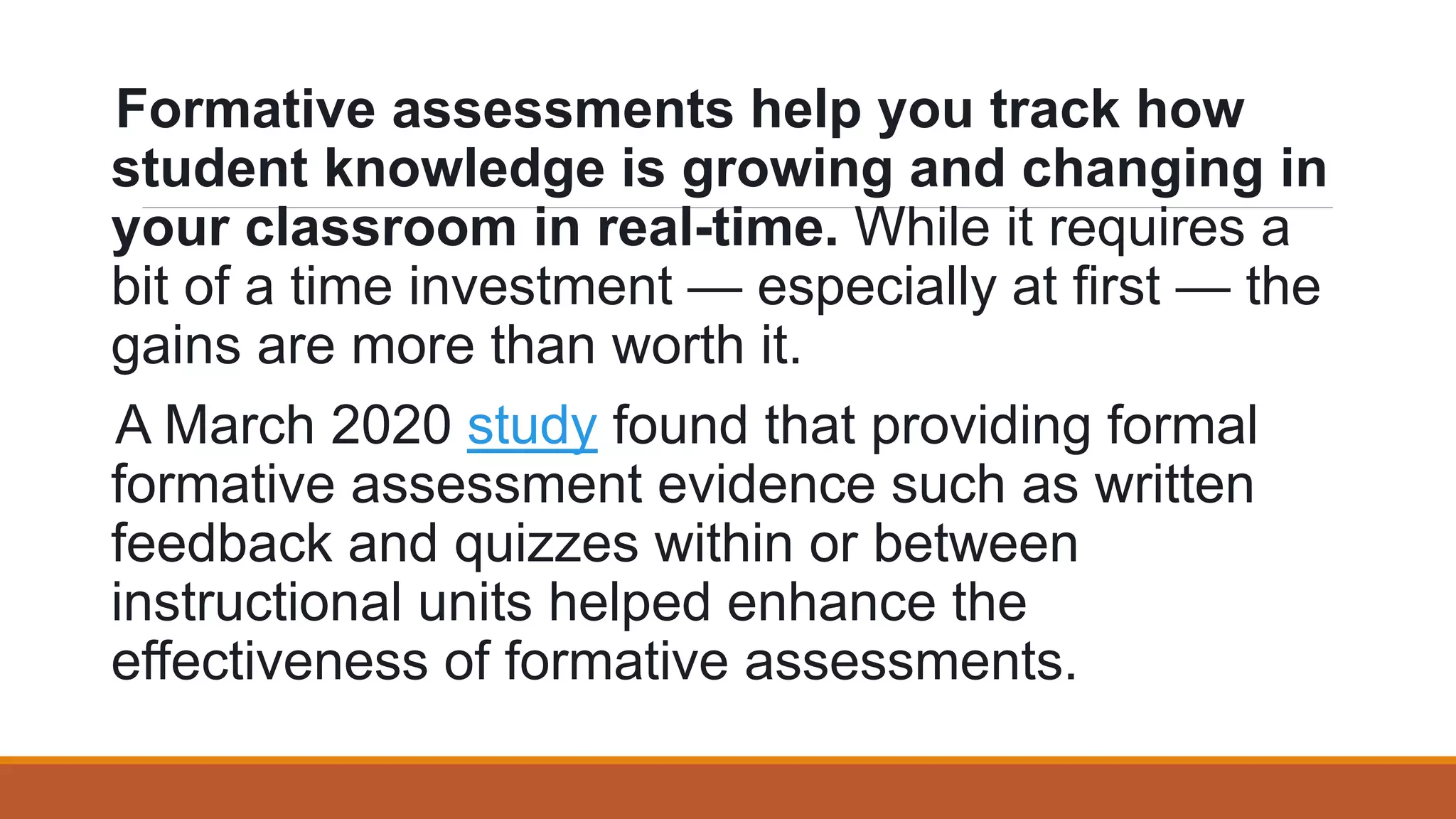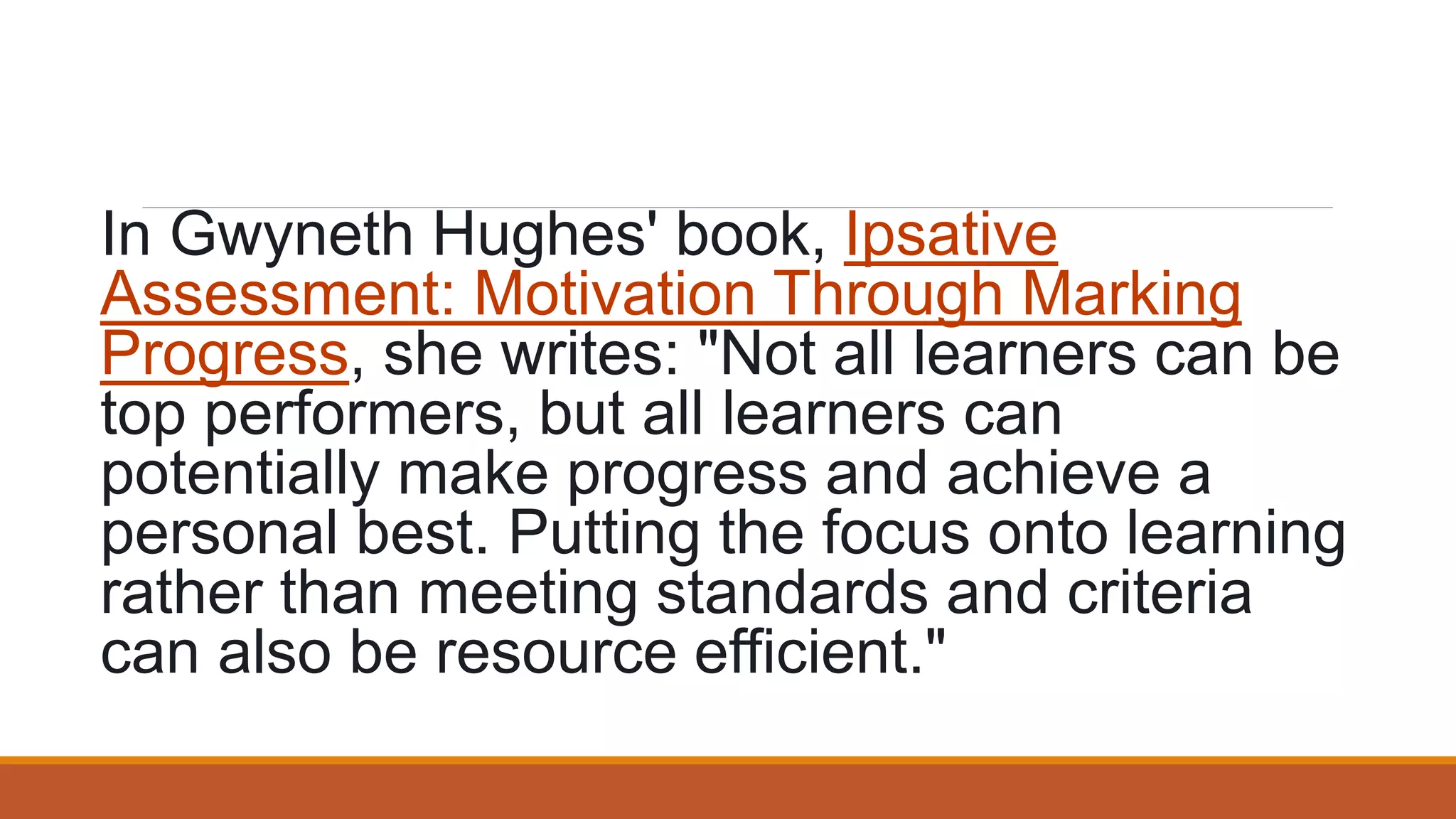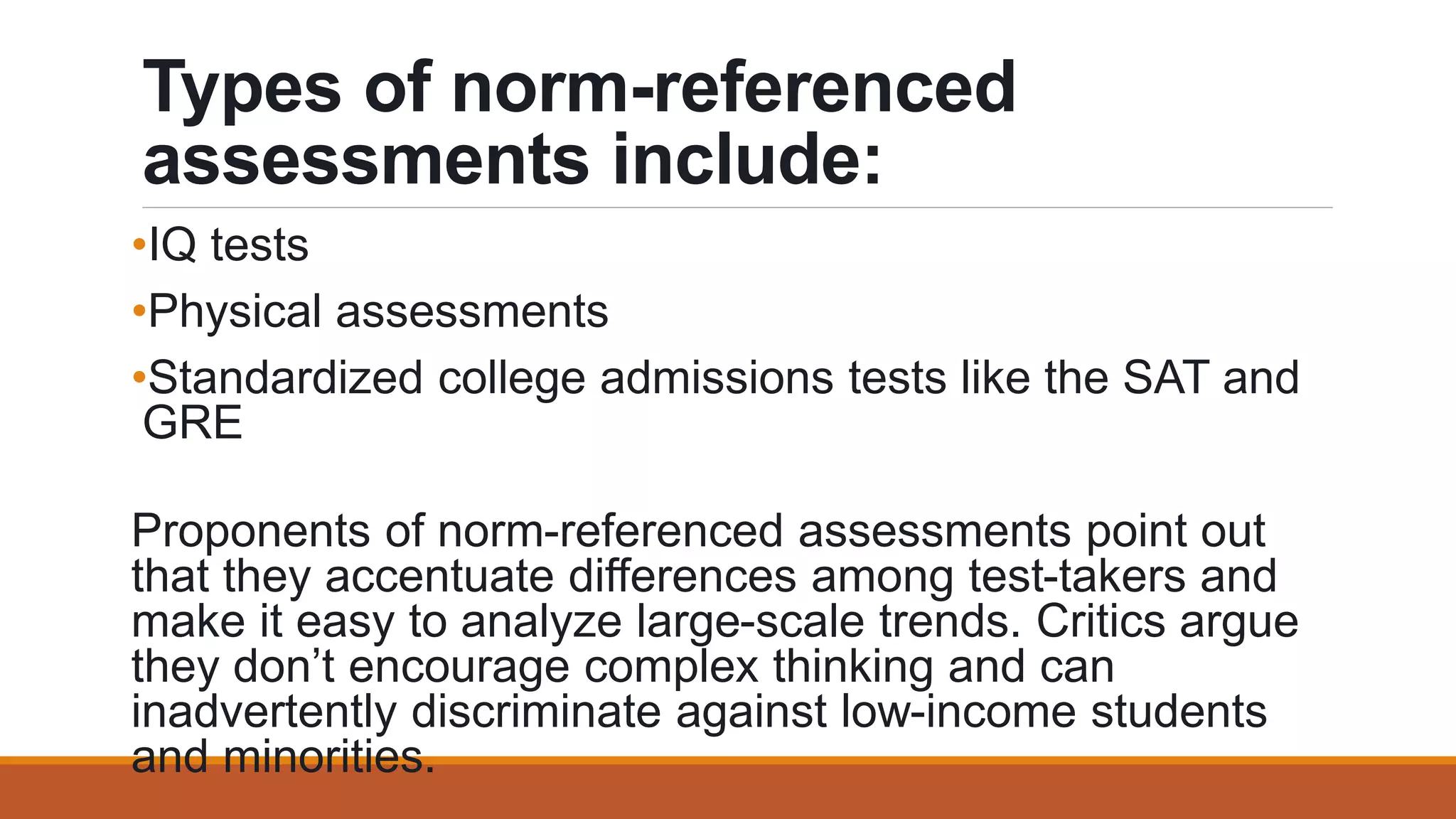The document discusses three main types of assessments: assessment of learning, assessment for learning, and assessment as learning. Assessment of learning refers to summative assessments like exams and final projects that are used to evaluate learning at the end of a unit. Assessment for learning refers to formative assessments like quizzes, discussions and projects that are used during instruction to adjust teaching and provide feedback. Assessment as learning refers to assessments that actively involve students in self-assessment and goal-setting to improve learning. Examples of different assessment types are provided.




